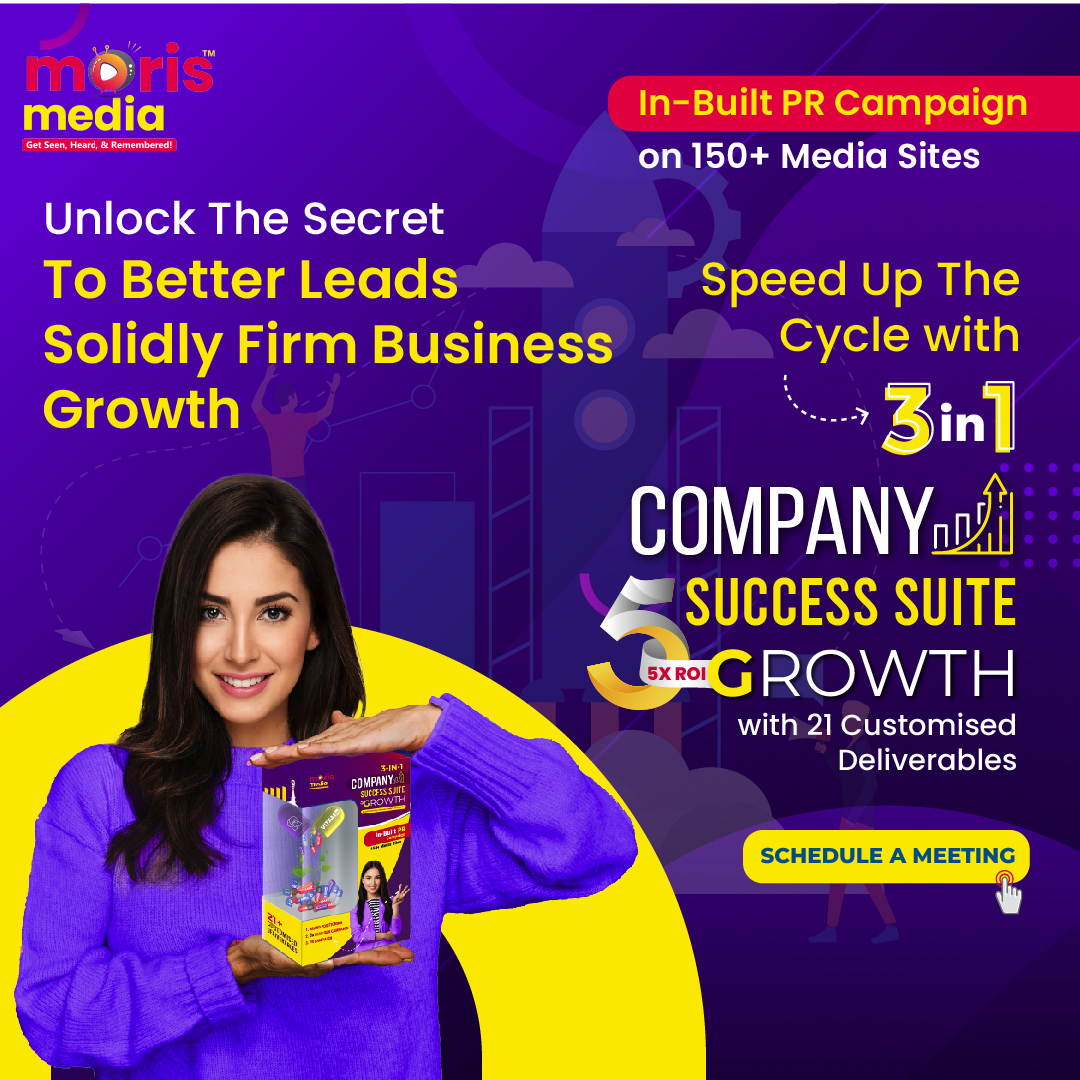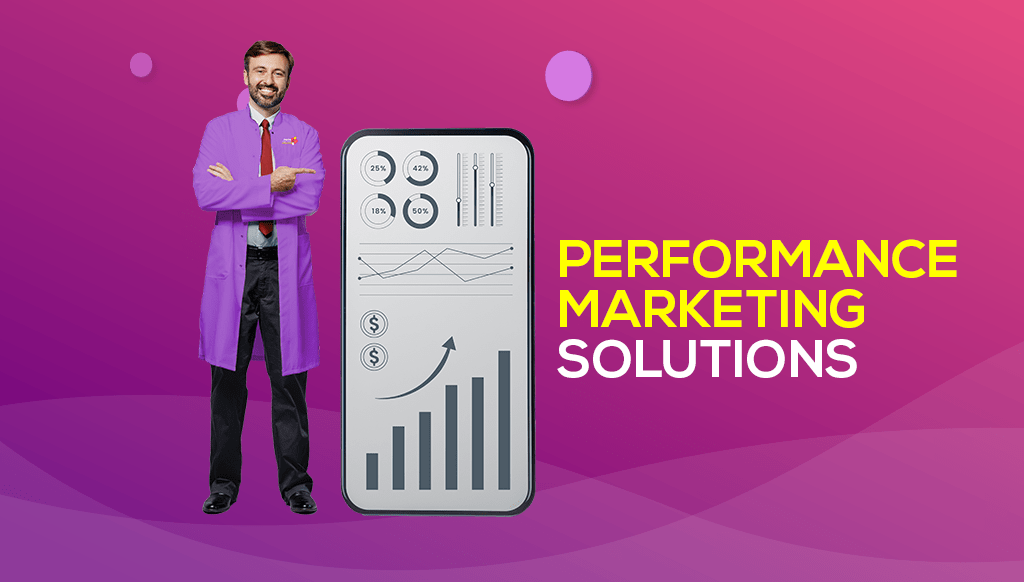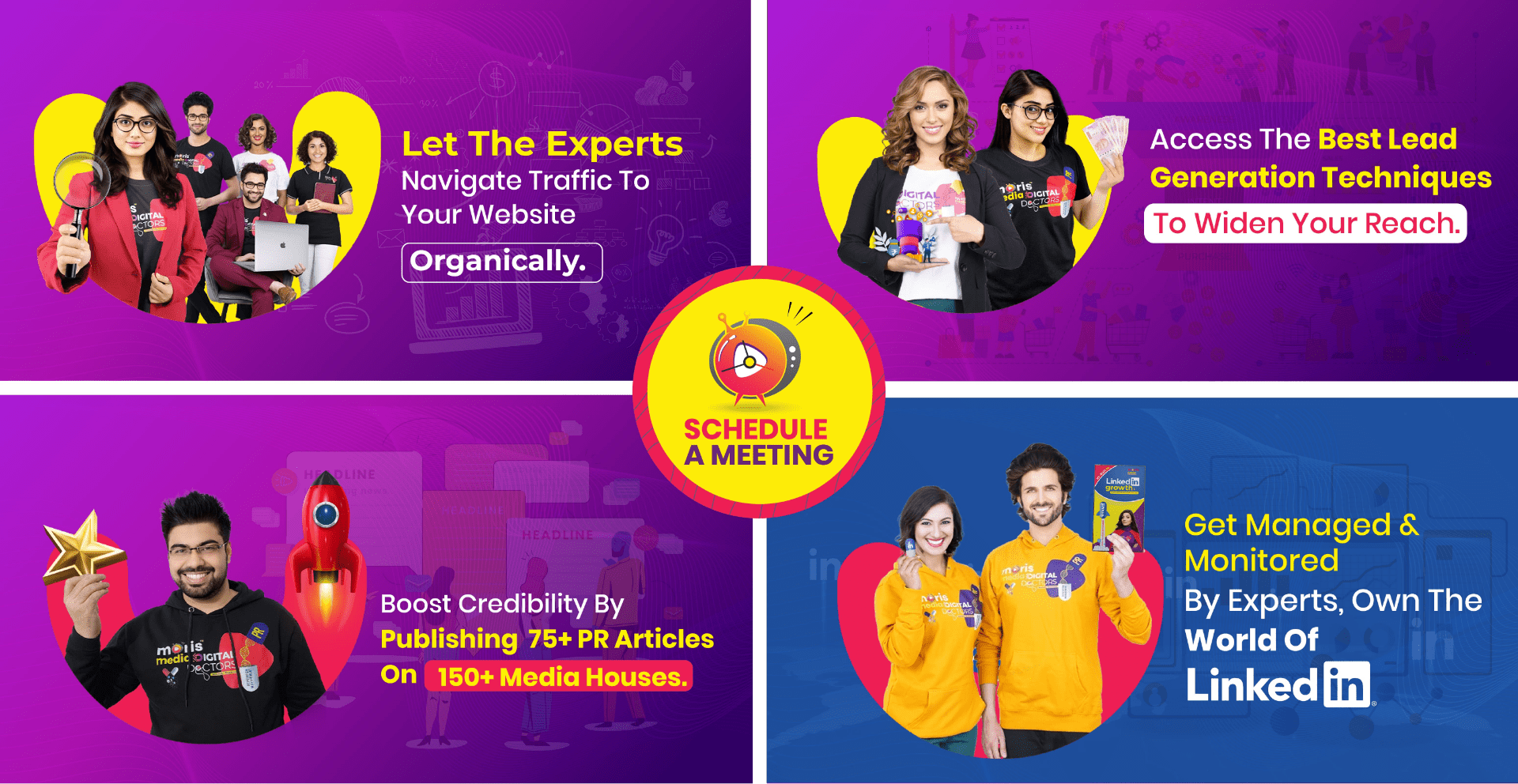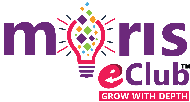Frequently Asked Questions
The 4 types of information are:
Factual
Conceptual
Procedural
Meta-data.
The Marketing Mix framework, also called the 4P framework, is a popular business model utilized in marketing to explain the factors that affect a company's marketing success. The four key elements of the 4P framework are:
Product: Refers to the features, quality, design, and branding of the company's goods or services.
Price: Refers to the cost of the product or service, including pricing strategies, discounts, and payment terms.
Place (or distribution): Refers to the channels and locations through which the product or service is made available to customers, such as retail stores, online platforms, or direct sales.
Promotion: Refers to the marketing and communication tactics utilized to generate interest and awareness in the product or service, such as advertising, sales promotion, public relations, and personal selling. Moris Media, the foremost social media management agency in United States, offers the 4P framework as a systematic approach for designing and executing marketing strategies, helping companies to consider the critical aspects of their marketing mix in a comprehensive and cohesive manner.
The four basics of e-commerce are:
Website design and functionality: A well-designed and user-friendly website is essential for a successful e-commerce business. The website should be easy to navigate, have clear product descriptions and images, and be optimized for mobile devices.
Online payment processing: A secure and reliable online payment system is crucial for e-commerce businesses to accept payments from customers. This involves setting up a merchant account with a payment gateway provider and integrating it with the online store.
Shopping cart and checkout: A shopping cart is an essential feature of any e-commerce website, allowing customers to add items to their cart and proceed to checkout. The checkout process should be simple and straightforward, with clear instructions and an option to create an account or checkout as a guest.
Order fulfilment and delivery: E-commerce businesses must have a system in place to manage orders, process payments, and fulfil orders. This includes handling inventory, packaging, and shipping orders to customers, and providing tracking information and customer support throughout the process.
As per Moris Media United States's leading PR company these four basics, e-commerce businesses must also consider other factors such as digital marketing, customer engagement, and data analytics to optimize their operations and drive growth.
According to United States’s reputed PR company Moris Media United States there are several key features of e-commerce that set it apart from traditional commerce. Here are seven of the most important features of e-commerce:
Global reach: E-commerce allows businesses to reach customers anywhere in the world, without the constraints of geographical location.
24/7 availability: Online stores are always open, allowing customers to shop at any time of day or night.
Personalization: E-commerce businesses can use data to personalize their offerings to individual customers, such as offering product recommendations or targeted advertising.
Lower costs: E-commerce businesses often have lower overhead costs than traditional brick-and-mortar stores, due to lower rent, smaller staff, and lower inventory costs.
Greater convenience: Customers can shop from the comfort of their own home or on the go, without the need to visit a physical store.
Faster transactions: E-commerce allows for fast and efficient transactions, with payment and shipping often taking just a few clicks.
Increased customer engagement: E-commerce businesses can use a variety of digital marketing techniques, such as email marketing and social media, to engage with customers and build relationships.
The two main pillars of e-commerce are technology and logistics.
Technology refers to the systems and platforms that enable e-commerce transactions, such as online shopping carts, payment gateways, and product information management systems. The technology pillar of e-commerce also includes website design and development, mobile application development, and the use of emerging technologies such as artificial intelligence, virtual reality, and augmented reality.
Logistics refers to the process of fulfilling orders, including storing inventory, packaging products, and shipping them to customers. Logistics is a critical component of e-commerce, as fast and reliable delivery is essential for customer satisfaction. The logistics pillar of e-commerce includes order management systems, warehouse management systems, and transportation management systems. E-commerce businesses must also consider factors such as shipping rates, delivery times, and international customs regulations.
As per Moris Media United States’s leading PR agency both technology and logistics are essential for the success of an e-commerce business, as they enable businesses to provide a seamless and efficient shopping experience for customers while ensuring that products are delivered in a timely and cost-effective manner.
According to United States’s leading PR agency Moris Media United States, the four types of business strategies are:
Cost leadership strategy: This strategy involves becoming the lowest-cost producer in an industry. Companies that pursue this strategy typically focus on achieving economies of scale, reducing production costs, and optimizing their supply chain to offer products or services at a lower price than their competitors.
Differentiation strategy: This strategy involves offering unique and superior products or services to customers that are valued by them. Companies that pursue this strategy typically focus on product design, branding, customer experience, and other factors that set them apart from their competitors.
Focus strategy: This strategy involves targeting a specific customer segment or niche and tailoring products or services to meet their unique needs. Companies that pursue this strategy typically focus on a narrow product line, geographic region, or customer type.
Innovation strategy: This strategy involves using innovation and technology to develop new products, services, and business models that disrupt existing markets or create new ones. Companies that pursue this strategy typically invest heavily in research and development, and they aim to be the first to market with new and innovative products or services.
As per Moris Media Columbus’s leading PR company, the three types of e-commerce are:
Business-to-Consumer (B2C) e-commerce: This type of e-commerce involves transactions between businesses and individual consumers. B2C is the most well-known type of e-commerce and involves the sale of products or services directly to the end-user.
Business-to-Business (B2B) e-commerce: This type of e-commerce involves transactions between two businesses. B2B e-commerce often involves large quantities of goods or services, with a focus on efficiency, cost-effectiveness, and long-term business relationships.
Consumer-to-Consumer (C2C) e-commerce: This type of e-commerce involves transactions between individual consumers. C2C e-commerce is typically facilitated by an online marketplace or auction platform, where individuals can buy and sell products and services directly to one another.
It's worth noting that there are other types of e-commerce, such as Business-to-Government (B2G) and Consumer-to-Business (C2B), but these three are the most common and widely recognized.
As per United States’s leading PR agency Moris Media United States, the four main types of e-commerce are:
Business-to-Consumer (B2C) - This is the most common type of e-commerce, where businesses sell products or services directly to consumers through online platforms. Examples include Amazon, Walmart, and eBay.
Business-to-Business (B2B) - This type of e-commerce involves businesses selling products or services to other businesses. Examples include wholesale suppliers, manufacturers, and distributors.
Consumer-to-Consumer (C2C) - This type of e-commerce involves individuals selling products or services to other individuals through online platforms. Examples include eBay and Craigslist.
Consumer-to-Business (C2B) - This type of e-commerce involves individuals selling products or services to businesses. Examples include freelance writers, photographers, and graphic designers who sell their services to companies.
According to Ohio’s reputed PR agency Moris Media Ohio, the features of e-commerce can vary depending on the specific platform and business model, but some common features include:
Online storefront: A website or mobile app that serves as the digital storefront for the business.
Product catalogue: A digital catalogue or listing of the products or services available for purchase.
Shopping cart: A tool that allows customers to select products or services they want to purchase and keep track of their selections.
Payment gateway: A secure online payment system that allows customers to pay for their purchases using various payment methods such as credit cards, PayPal, or bank transfers.
Order management: A system that manages orders from the time they are placed by customers to the time they are fulfilled and delivered.
Inventory management: A system that tracks the availability of products or services in real-time and manages inventory levels to ensure timely fulfilment.
Customer management: A system that manages customer data, including order history, preferences, and contact information.
Security: E-commerce platforms must ensure the security of customer data and transactions through the use of SSL encryption, secure payment gateways, and other security measures.
Analytics and reporting: E-commerce platforms often provide analytics and reporting tools to help businesses track sales, customer behaviour, and other key metrics.
Mobile optimization: E-commerce platforms must be optimized for mobile devices to accommodate the growing number of customers who shop on their smartphones and tablets.
The future of e-commerce looks bright, with many trends indicating continued growth and evolution in the coming years. Here are some of the key developments to look out for:
Increased mobile commerce: As more consumers shop on their smartphones and tablets, e-commerce platforms will need to optimize their mobile experiences to keep up with demand.
More personalized experiences: E-commerce platforms will increasingly leverage customer data to create personalized experiences, such as tailored product recommendations and marketing messages.
Greater adoption of AI and machine learning: E-commerce platforms will use AI and machine learning to improve customer experiences, streamline operations, and optimize sales and marketing efforts.
Expansion of social commerce: Social media platforms are increasingly integrating e-commerce features, allowing users to shop directly from their feeds. This trend is expected to continue, with social commerce becoming a significant sales channel.
Growth of voice commerce: With the increasing popularity of voice assistants like Amazon's Alexa and Google Assistant, e-commerce platforms will need to optimize their experiences for voice-based shopping.
More sustainable practices: Consumers are becoming increasingly aware of environmental issues and are seeking out sustainable products and practices. E-commerce platforms will need to incorporate sustainability into their business models to remain competitive.
Continued growth of marketplaces: E-commerce marketplaces like Amazon, Alibaba, and eBay will continue to dominate the online retail space, with smaller niche marketplaces also gaining traction.
According to United States’s reputed agency Moris Media United States, overall, e-commerce is expected to continue its rapid growth and evolution in the coming years, with new technologies and changing consumer preferences shaping the industry's future.
The term talent management encompasses the full human resources (HR) process. High-performing individuals must be attracted, developed, motivated, and kept on staff.
Simply described, talent management is a technique used to manage people with the specific objective of retaining a high-performing workforce.
Recruitment to staff retention are only a few of the many procedures and tasks that make up talent management. The following are a few of the talent management procedures:
Job Postings
Recruitment planning
Job/ Role description
Writing Job Advertisements
Placement and ongoing job advertisement optimization
Application review
Interaction with candidates
Phone, online assessment, video, or screening interview
Scheduling interviews with multiple team members and staff
Background checks and information verification
Extending job offers
Negotiation or agreeing upon conditions
Signing of Employment Contract
Employee Onboarding Process
Greeting new employees and providing business interactions
Job training
Setting employee goals
Employee development and continuous training
Career planning and career path trajectory
Promotions, lateral transfers, recruits from within, recommendations
Employment termination either by choice or by discretion of employer.
Talent Management is concerned with ensuring that newly hired talent is developed and nurtured to ensure increased business growth and employee productivity and performance. Talent acquisition, on the other hand, is concerned with all the processes that enable you to hire top talent (employer branding, company culture, mission statements, job advertisements).
The act of hiring the most desirable candidates from your talent pool is known as talent acquisition, and the process of keeping and developing the employees you selected from your talent pool is known as talent management.
For the majority of organisations, talent management is crucial to the acquisition, growth, and retention of talented individuals.
Due to the fact that talent management encompasses one of the company's most valuable resources—its employees—it is imperative that talent management be part of the business plan.
Because of this, businesses must properly manage their workforce to enhance their competencies and skills in order to keep them. These are a few main justifications for why businesses need to either have a talent management team in-house or hire the services of Talent Management agencies:
Top talent attraction - employment brand reputation:
It's not just crucial to the success of your business that your brand has a positive reputation among customers. It plays a significant role in luring top personnel to your business. One of two things will depend on your reputation. Your recruiting efforts will be much facilitated if your reputation is where you'd like it to be. Sadly, having a bad reputation will severely limit the expansion of your business since you won't be able to recruit the kind of workers you need with the degree of experience and competence necessary to meet your company's aims and objectives. This is especially true when you're looking to hire for senior-level positions that are challenging to fill. The company's business performance and overall outcomes will increase as a result of maintaining a strong employment brand that may draw potential talent.
Employee motivation:
Having a talent management strategy in place aids organisations in maintaining employee motivation, which gives workers more reasons to remain with the business and take pleasure in their profession. As per a top industrial survey, more than 90% of workers stated that they needed more than money to feel engaged and motivated.
Provide an Affordable Package:
The best businesses are aware that the basis of an effective talent management strategy is a competitive benefits package. Almost 80% of workers consider the benefits package when deciding whether or not to accept a job offer. About half of employees who are already working for a company say they would stay because they are happy with the benefits they receive. Since switching jobs is no longer a barrier to employment, so workers might be more open to considering their options when another employer offers an alluring benefits package.
Continuous Performance Evaluation:
A solid talent management solution gives businesses the tools they need to improve and streamline the performance process and provide ongoing performance feedback to their staff. Top global companies are starting to reevaluate performance management and are doing away with annual reviews and performance ratings. Instead, they have switched to a feedback process that is more continuous in the hopes that it would produce better visibility into real performance and lead to better commercial outcomes. Performance evaluations won't disappear overnight, and this radical shift in performance management will take some time to catch on, but companies are starting to explore for new ways to measure and engage on performance more frequently.
Improved performance by the workforce:
Companies will find it simpler to determine which staff will be most suited for a position by using talent management. With the suitable staff in place, performance management problems and complaints may decrease. Additionally, it will ensure that the company's top talent stays longer.
Engaged employees:
Employers can plan for and consistently make decisions about staff development thanks to talent management. This might aid in ensuring the employees' skill development and career advancement inside the company. Also, when there is a fair system for development, employees will feel more involved, which can help to enhance the retention rate.
Retaining your finest talent:
Create an environment where your employees feel valued by your business. When you genuinely care about your staff, they'll look out for one another, your clients, and your company. Go beyond the wonderful advantages. Encourage a culture of trust and respect for all people in the workplace, and uphold it constantly. Make your workplace transparent and honest. Provide constructive criticism for the work done and show a willingness to hear your colleagues' worries. Make the company's objectives and expectations clear. Higher retention rates are produced by well-organized onboarding procedures, which ultimately save the company money on recruitment and performance management expenses.
Boost operational efficiency:
A strong company culture can have a negative impact on business success. Several studies show a direct link between positive business cultures and financial performance. Many businesses are unaware of how important this connection may be. Employees need to be aware of what you are doing to enhance their working environment, just as all managers need to be aware of how they can improve and what they need to focus on. Employees who feel engaged, competent, and motivated are more likely to work towards the organization's business objectives, which in turn improves customer satisfaction and corporate performance.
The majority of celebrity managers and the top celebrity management agencies like Moris Media make use of all available opportunities for creating numerous connections with businesses or individuals in order to advance the careers of the celebrities. Celebrity Managers at Moris Media are aware of current trends and use them for advancing the careers of our clients and even finding them newer gigs. This includes but is not limited to Hosting special events, working in films, OTP platforms and television and selecting brands that they can endorse.
The celebrity managers at Moris Media start by identifying whether the essential characteristics of a celebrity are aligned with the goals of the brand that needs to be promoted. If the celebrity is found to be matching with the key brand tenets and is deemed to be a strong fit for the target market, then we go ahead and select them for endorsing the brand.
A Celebrity Manager is a Digital Doctor, who is a specialist in all facets of PR and Digital Marketing in the modern era and knows to use all the services to the full advantage of the celebrities and brands they serve. Some of the additional services they offer include developing client marketing strategies, connecting with businesses, setting up business meetings, working around the client's schedule and book promotions, engagement and interview preparation, and contract negotiation.
The following are warning signs to watch out for:
Followers without Pictures or Posts: It's easy to assume that a user's followers are phoney if they follow a celebrity but don't have their own profile images. As a result, the celebrity marketing agencies avoid these celebrities.
Irrelevant and/or Spam Comments: It's simple to assume that a celebrity's followers are active if they receive a large number of comments. We see a few pictures and skim the comments. It can be asserted if the comments are from phoney followers if they are blatantly pointless or nonsense.
Services that come after/follow "fan-buying" services: One or two fan-buying accounts may be visible if you check through the followers of the celebrities and the people they follow. These are significant warning signs that the Instagram influencer is acquiring phoney followers.
Although there are no hard-and-fast rules when it comes to signing celebrities, it is a wise idea to see if you can offer a barter system where the celebrity also receives a product in exchange for their likeness being on your brand.
Celebrity managers are more necessary now than ever since social media is attracting more renowned people than ever. The occupation is anticipated to rise by 7% between 2018 and 2028.























.png?v=1676960503)

















